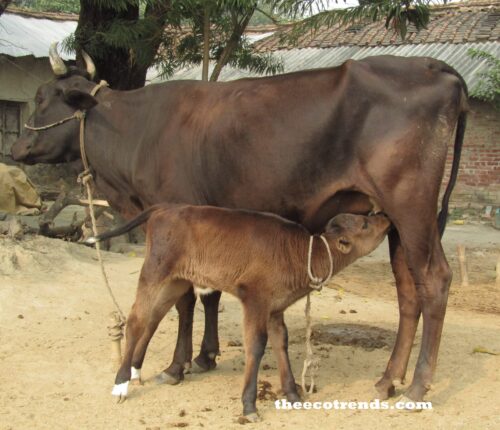The mechanism of Breathing and role of diaphragm –
The mechanical process of breathing involves inspiration and expiration. When the diaphragm goes down, the expansion of rib-cage and contraction of stomach muscles cause an expansion of the internal volume. Now the air pressure in the rib cage is reduced as compared to the air pressure outside in the atmosphere. To make up the internal volume, the air from outside enters into lungs and lungs are inflated. The whole process in called as inspiration.
When the diaphragm goes up like a dome, it presses the internal area causing pressure on lungs. The rib-cage is compressed and lungs contract to expel the air inside it. This air goes out through nostrils. This is what we call expiration. The diaphragm has to play a key role in the whole process of breathing.
The Exchange of gases –
When oxygen enters into lungs it is diffused into the blood of capillaries. At the same time, the carbon dioxide of blood comes out into the cavities of alveoli through the same process of diffusion.Thus, the exchange of gases takes place inside lungs.
Transport of gases:
No sooner than oxygen enters into blood contained in capillaries of the membranes of alveoli, a transport protein named Haemoglobin traps it and becomes Oxyhaemoglobin. It transports oxygen and leaves it into the tissue fluid and becomes Haemoglobin. The oxygen from the tissue fluid is diffused into cells and takes part in the cellular respiration inside mitochondria. The carbon dioxide of the cells is diffused into tissue fluids and gets loaded on Haemoglobin turning it to carboxyhaemoglobin. This carbon dioxide is released into cavities of alveoli in lungs.
Cellular respiration
The site of cellular respiration is mitochondria. It is in mitochondria that degradation of glucose takes place through a series of reactions catalyzed by enzymes. The process goes on stepwise and energy is liberated on each step. This energy is absorbed by phosphate atom that joins ADP (Adenosine Di Phosphate) to become ATP (Adenosine Tri Phosphate). When energy is needed, a phosphate atom is broken and the energy is released for use. Thus ATP acts as an Energy Currency of the cell.
Pathways of Energy Liberation
The food materials that are digested during the process of nutrition and absorbed into cells are used inside cells to provide energy for various life activities going on in the body. Different types of organisms adopt different pathways for this.
In the cytoplasm of cells Glucose a six carbon molecule is broken down to Pyruvate, a three carbon molecule, carbon dioxide and small amount of energy. This process is catalyzed by enzymes and this is common in all types of respiration in living systems. This pathway is called as Glycolysis which means splitting of sugar. 2ATPs are produced in this process.
In a yeast cell the Pyruvate is broken down in absence of oxygen to Ethanol a two carbon molecule, carbon dioxide and energy. This reaction is catalyzed by a fungal enzyme known as Zymase. Since the degradation of pyruvic acid in this case takes place in the absence of oxygen, it is called as Anaerobic Respiration. This process is also called as Fermentation.25 k.cal energy is liberated from one molecule of glucose in this process.
Only 8ATPs are formed in the anaerobic respiration. When a man needs more energy and it becomes impossible to get that much energy in shortest possible time, the degradation of glucose in muscles goes on in scarcity of oxygen as a result of which Lactic acid is formed. This lactic acid is accumulated inside muscles which causes pain and tiredness. In the time of rest this lactic acid is oxidized gradually and we get relief.
Reactions of respiration requiring oxygen are called as Aerobic Respiration. These actions are carried on under the influence of numerous enzymes in the mitochondria of cells. Here the Pyruvate is oxidized in different steps; carbon dioxide, water and ATP are produced.
The degradation of Pyruvate takes place in cyclic pathway called as Krebs’s Cycle or the Citric Acid Cycle. This cycle was finally identified in 1937 by Hans Adolf Krebs while at the University of Sheffield, for which he received the Nobel Prize for Physiology or Medicine in 1953.38 ATP molecules are produced during whole process of respiration i.e. 2 ATP in Glycolysis and 36 ATPs in Krebs’s Cycle.




